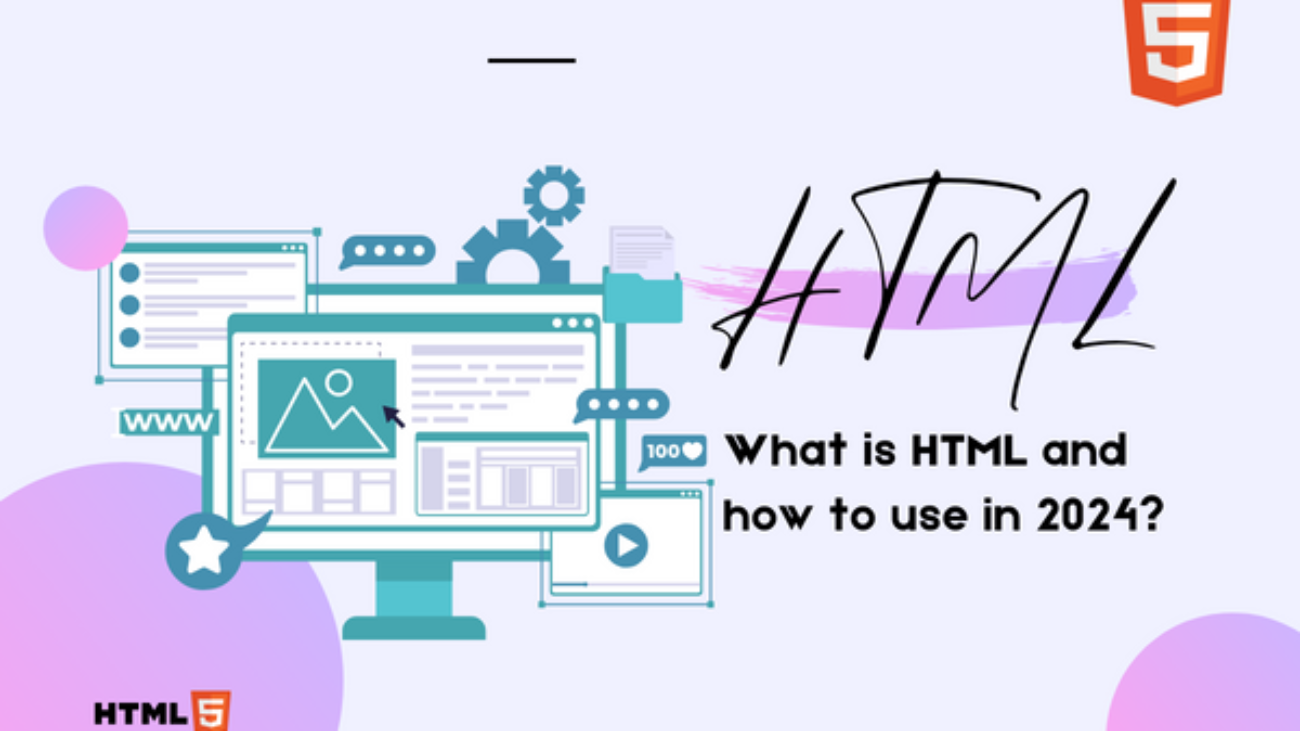What is HTML and how to use in 2024
Understanding HTML: A Beginner's Guide

HTML, or Hypertext Markup Language, is a markup language used to structure and format content on web pages. It consists of a series of elements, enclosed in opening and closing tags, that define the structure and semantics of a web page’s content. For example, the <p> element is used to define paragraphs, while the <h1> to <h6> elements are used for headings of varying levels of importance.
HTML is the backbone of the web, providing the foundation upon which web pages are built. It works in conjunction with CSS (Cascading Style Sheets) and JavaScript to create visually appealing and interactive web experiences. By understanding HTML, beginners can create basic web pages and gain a solid foundation for further exploration in web development.
The Role of HTML in Web Development in 2024
In 2024, HTML continues to play a crucial role in web development. While new technologies and frameworks have emerged, HTML remains the cornerstone of the web. It provides the structure and semantics needed to create accessible and well-organized web content. HTML works seamlessly with CSS and JavaScript to create visually appealing and interactive web experiences across a variety of devices and screen sizes.
With the rise of mobile and responsive web design, HTML’s role in web development has become even more critical. HTML provides the foundation for creating flexible and adaptable layouts that adjust to different screen sizes and orientations, ensuring a consistent user experience across desktops, tablets, and smartphones. Additionally, HTML’s semantic elements help improve accessibility and search engine optimization, making web content more discoverable and usable for all users.
Why HTML Still Matters in 2024: The Foundation of the Web?
HTML still matters in 2024 because it forms the foundation of the web. Without HTML, web pages would lack structure and coherence, making it difficult for users to navigate and understand content. Additionally, HTML is essential for search engine optimization (SEO), as it provides search engines with valuable information about the content and structure of web pages. In short, HTML remains a fundamental technology for creating accessible, user-friendly, and search engine-friendly web content.
Getting Started with HTML: Essential Concepts and Syntax
Getting started with HTML is relatively straightforward, as it relies on a few essential concepts and syntax rules. HTML documents are comprised of elements, which are defined by opening and closing tags. Tags enclose content and provide instructions to web browsers on how to display that content. Common HTML elements include headings, paragraphs, lists, links, images, and more. By mastering these basic concepts and syntax rules, beginners can create simple web pages and gradually build their HTML skills.

Exploring HTML5: New Features and Enhancements for 2024
HTML5 is the latest version of HTML, introducing several new features and enhancements that have revolutionized web development. Some of the key features of HTML5 include:
1. New Semantic Elements: HTML5 introduced new semantic elements such as <header>, <footer>, <nav>, and <section>, which provide more meaningful structure to web pages and improve accessibility.
2. Native Support for Audio and Video: HTML5 introduced native support for audio and video, allowing developers to embed multimedia content directly into web pages without the need for third-party plugins like Flash.
3. Canvas for Drawing Graphics: HTML5 introduced the <canvas> element, which allows developers to draw graphics, animations, and interactive content directly within web pages using JavaScript.
4. Improved Form Controls: HTML5 introduced new form controls such as <input type=”date”>, <input type=”email”>, <input type=”url”>, and <input type=”range”>, which provide better user experience and validation for web forms.
By exploring HTML5, developers can take advantage of these modern features to create more interactive and engaging web experiences in 2024. HTML5 builds upon the foundation of previous versions of HTML, adding modern capabilities for web development while maintaining backward compatibility with existing web content.
Writing Clean and Semantic HTML Code in 2024
Writing clean and semantic HTML code is essential for creating well-structured and accessible web content. Clean HTML code is easy to read, understand, and maintain, making it more efficient for developers to work with. Semantic HTML uses elements that convey meaning to both browsers and screen readers, improving accessibility and search engine optimization.
Some best practices for writing clean and semantic HTML code include:
1. Using Semantic Elements: Use semantic elements like <header>, <footer>, <nav>, and <article> to provide meaningful structure to web pages.
2. Proper Nesting: Make sure to properly nest HTML elements to maintain hierarchy and organization within the document.
3. Meaningful Element Names: Use descriptive and meaningful names for HTML elements to make the code easier to understand and maintain.
4. Avoiding Deprecated Elements: Avoid using deprecated elements and attributes in favor of modern alternatives supported by HTML5.
By following these best practices, developers can create clean, well-structured, and semantic HTML code that enhances accessibility, improves SEO, and ensures a positive user experience.
Mastering HTML for Responsive Web Design in 2024
Responsive web design is a critical aspect of modern web development, ensuring that web pages look and perform well on devices of all sizes. HTML plays a key role in responsive web design by providing the structure and organization needed to create flexible and adaptable layouts. By mastering HTML for responsive web design, developers can create web pages that automatically adjust to different screen sizes and orientations, providing a seamless user experience across desktops, tablets, and smartphones.
Some key principles of responsive web design include:
1. Fluid Grid Layouts: Use percentage-based widths and flexible grid layouts to create fluid and responsive designs that adapt to different screen sizes.
2. Media Queries: Use CSS media queries to apply different styles based on the size and characteristics of the device, such as screen width, orientation, and resolution.
3. Flexible Images and Media: Use CSS techniques such as max-width: 100% and height: auto to ensure that images and media elements scale proportionally and maintain their aspect ratios on different devices.
4. Mobile-First Design: Start with a mobile-first approach, designing for small screens and progressively enhancing the layout for larger screens using CSS techniques like progressive enhancement and graceful degradation.
By mastering HTML for responsive web design, developers can create web pages that provide a consistent and optimized user experience across a wide range of devices, ensuring that their content is accessible and usable for all users.
Integrating HTML with CSS and JavaScript for Modern Websites.
HTML works in tandem with CSS (Cascading Style Sheets) and JavaScript to create modern and dynamic websites. CSS is used to style and format HTML elements, while JavaScript adds inter

Customer FAQs
Q: What is HTML, and why is it important?
A: HTML, or Hypertext Markup Language, is the standard markup language used to create and design web pages. It provides the structure and framework for organizing content on the internet, making it essential for web development.
Q: How do I learn HTML?
A: There are many resources available for learning HTML, including online tutorials, books, and courses. Websites like W3Schools and MDN Web Docs offer comprehensive guides and tutorials for beginners.
Q: What is the difference between HTML and HTML5?
A: HTML5 is the latest version of HTML, introducing new features and enhancements such as new semantic elements, native support for audio and video, and improved form controls. HTML5 builds upon the foundation of previous versions of HTML, adding modern capabilities for web development.
Q: How can I validate HTML code?
A: There are online validators available that can check the syntax and structure of your HTML code to ensure it is valid and error-free. Websites like the W3C Markup Validation Service allow you to input your HTML code and receive feedback on any errors or issues found.
Q: Is HTML still relevant in 2024?
A: Yes, HTML remains relevant in 2024 and beyond as the foundation of web development. While new technologies and frameworks have emerged, HTML continues to be the backbone of the web, providing the structure and organization needed to create accessible and well-organized web content.



[…] You Know How To Earn Money From HTML Coding ? […]